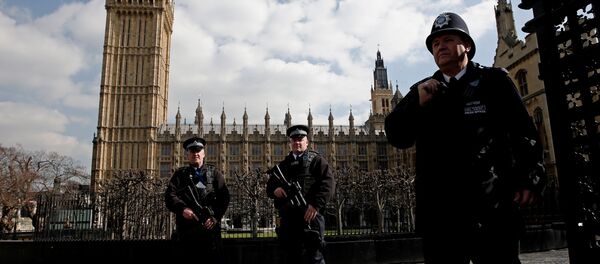On Thursday, an unsealed federal indictment stated several members of a Latino gang organized an attack on May 12, at a time when an increasing number of African-American families were moving into the Ramona Gardens housing complex.
According to prosecutors, the suspects shattered apartment windows before tossing Molotov cocktails inside to "maximize damage" in homes that often held families with children. Of the four homes that were attacked, three were occupied by black families.
"This crime was particularly heinous because they attacked people’s homes, where children were sleeping," Eileen Decker, US attorney for the Central District of California, said. "The fact that children were endangered made this a particularly disturbing type of crime."
The recent arrests mirror similar charges leveled against Latino gangs over the past 20 years, involving attempts to push blacks out of certain neighborhoods in the area. A few years ago, members of a Latino gang were charged with organizing a campaign to force blacks from the Florence-Firestone area, an unincorporated neighborhood where an alleged 20 homicides took place over three years.
In the Harbor Gateway area of LA, targeting of blacks resulted in the death of 14-year-old Cheryl Green, whose death became a focal point for organizing against the violence. In the early 1990s, a member of a Latino gang was convicted of a number of killings and assaults.
Prosecutors described defendants in the Ramona Gardens case as being members of the Big Hazard gang, a group that was first organized in the 1940s. Charges included interfering with housing rights, conspiring to violate civil rights, using fire and carrying explosives to commit a federal felony and committing violent crime to aid racketeering.
A bomb exploded in the pantry of a Ramona Gardens apartment on August 30, 1992. When the black family inside ran outside to escape the blast, they realized the family next door, also black, had been attacked only minutes before. Only seven black families lived in the area at the time, and most left in the wake of the bombings. Ramona Gardens then went through a 20-year period where very few African-Americans moved to the neighborhood.
Black families slowly returned to the area, and by the time of the 2014 attack, 23 black families lived in Ramona Gardens. According to the LA city housing index, 3% of the area’s residents at the time were black.
Thursday’s unsealed 25-page indictment reveals a detailed planned to oust black residents. Purported gang leader Carlos Hernandez, 31, told members in early May 2014 that they would be using Molotov cocktails. They reconvened on Mother’s Day, May 11, to coordinate the attacks.
Ramona Gardens resident Irena Vega recalls the firebombing of a black family’s home in the 90s. She says that gangs aren’t as prevalent today as they were then.
"The gangs were heavy around here, now they aren’t." she said.





